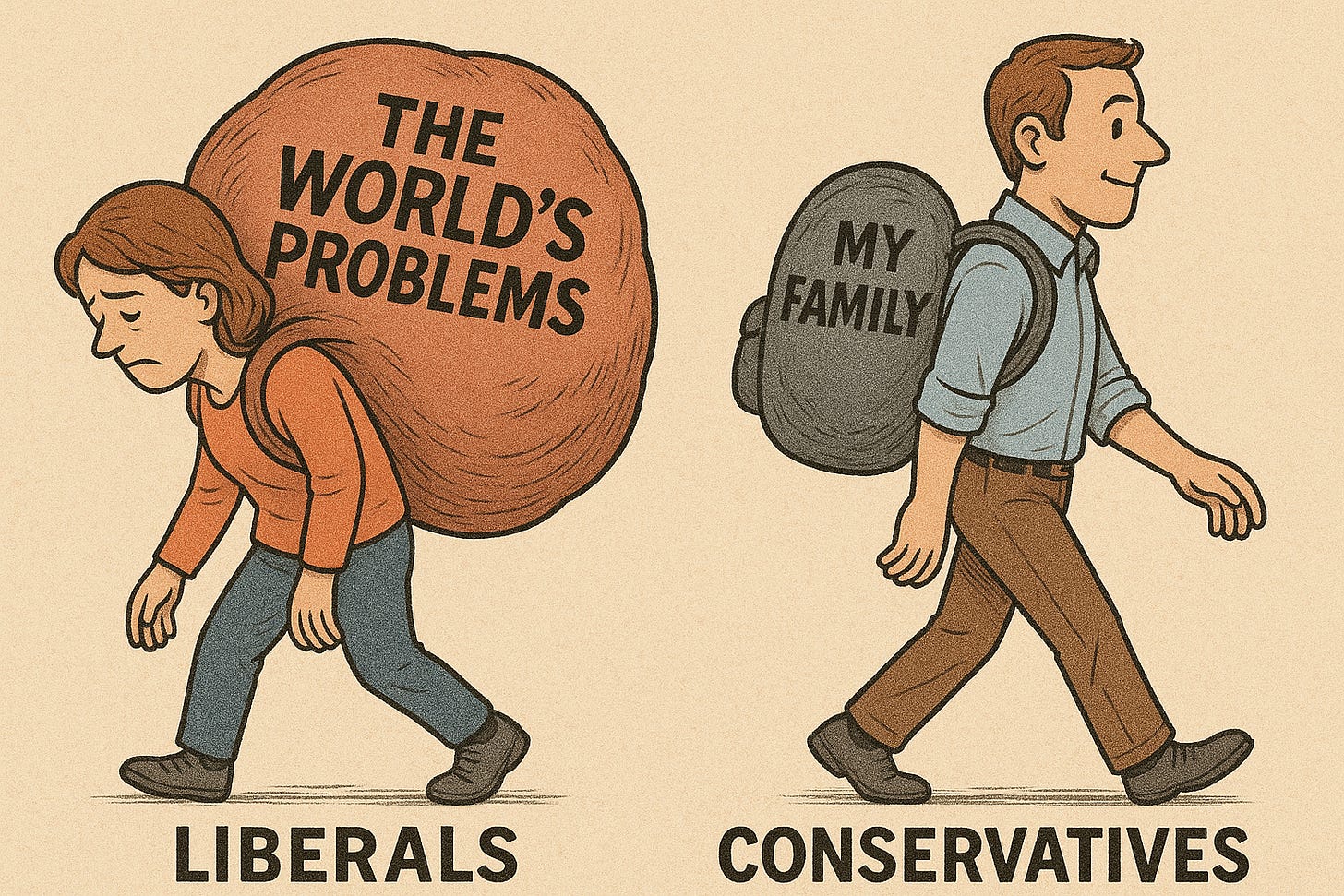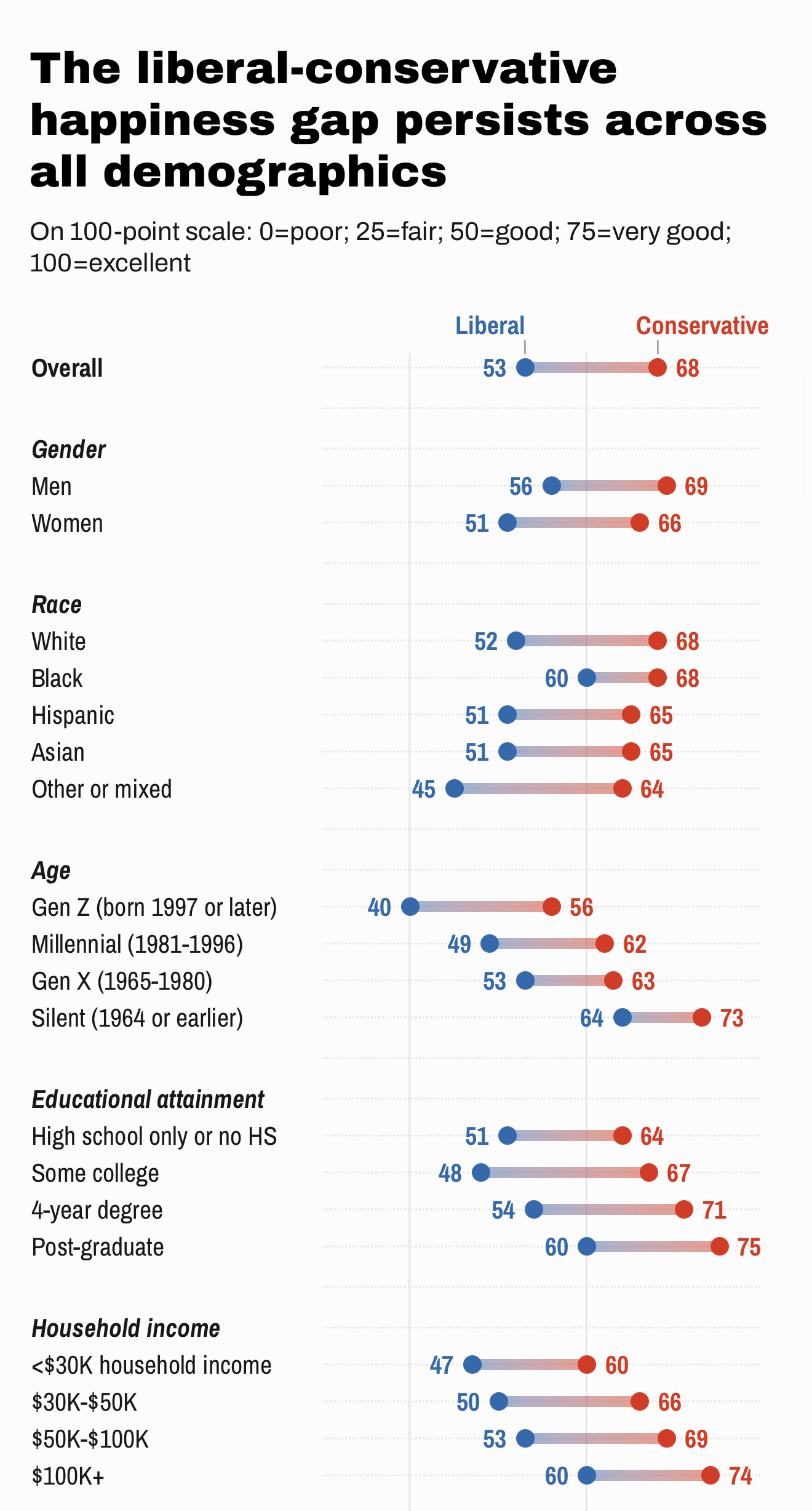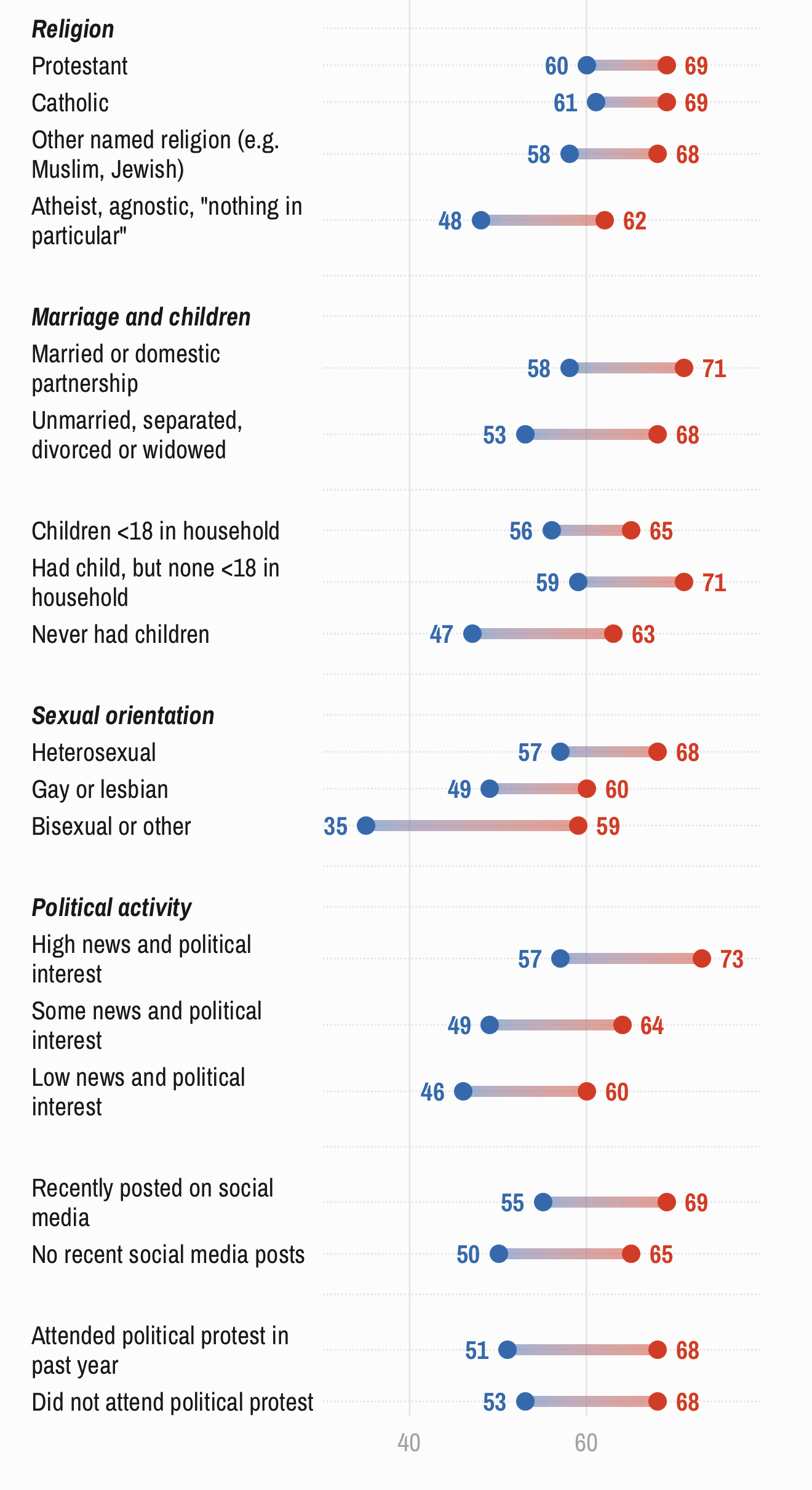Survey Says: Why Are Liberals So Unhappy? The Data Might Surprise You
New research reveals a stark mental health gap between political ideologies, with conservatives reporting higher well-being trends: conservatives are happier than liberals, and it’s not even close.
Using data from the 2022 Cooperative Election Study (CES), a massive survey with 60,000 respondents, political analyst Nate Silver shows conservatives score 68 on a 100-point mental health scale, while liberals lag at 53. The average American sits at 60. This gap persists across demographics—age, gender, race, income—raising tough questions about why political ideology seems to predict personal well-being.
Not Just a Fluke
Could this be a coincidence? Maybe unhappy people just lean liberal? Silver says no. Even when controlling for factors like income or education, the divide holds. For example, conservatives earning less than $30,000 report the same mental health (60) as liberals making over $100,000. Silver notes, “The difference between liberals and conservatives is remarkably persistent.” The attached chart, drawn from CES data, shows this consistency across groups: young to old, rich to poor.
Values and Expectations
Why the gap? One clue lies in expectations. Liberals often champion ideals like equity and systemic change, which can foster a sense of urgency—or frustration—when progress stalls. Conservatives, prioritizing personal responsibility and limited government, may find contentment in controlling what they can. Silver hints at this, suggesting liberals might be “more conscientious about the suffering of others,” which could weigh on their psyche. Meanwhile, conservatives shrug off systemic woes, focusing on individual agency.
The Role of Faith and Family
Religion and family life also play a part. Silver’s data shows religious people—Catholic, Protestant, or otherwise—are happier, and conservatives are more likely to be religious. The gap narrows among religious liberals and conservatives (e.g., 61 vs. 69 for Catholics), but it’s still there. Marriage and kids help too, with empty-nesters reporting peak happiness. Yet childless conservatives (63) outscore childless liberals (48), suggesting ideology trumps lifestyle. A government that promises solutions but delivers bureaucracy might leave liberals disillusioned.
Youth and Identity Struggles
The gap is widest among the young. Gen Z conservatives score 58, while liberals barely hit 50. Silver points out that young liberals identifying as mixed-race or non-heterosexual report especially low happiness, perhaps tied to identity struggles in a polarized world. Often skeptical of rapid social shifts, Conservatives may feel less pressure to navigate these complexities. When government policies amplify identity debates over practical fixes, it’s no wonder some feel lost.
The Social Media Trap
You’d think social media fuels misery, but Silver’s findings challenge that. Politically engaged people, including social media users, report slightly higher happiness. This surprised Silver, who expected platforms like Twitter to drag liberals down, given their dominance there in 2022. Yet the data suggests engagement reflects energy, not despair. Still, endless online debates, often fueled by government-driven narratives, might trap liberals in a cycle of performative outrage, while conservatives stay grounded in skepticism of overreach.
A Fiscal Lens on Happiness
As a fiscal watchdog, I see a connection to the government’s role. Liberals often back expansive programs—healthcare, education, welfare—expecting transformative results. When these flounder (think $24 billion in California’s unemployment fraud), disillusionment follows. Conservatives, wary of bloated bureaucracies, expect less from the state and more from themselves. This mindset, rooted in limited government, may foster resilience. Silver doesn’t say this outright, but his data screams it: overreliance on government correlates with disappointment.
Look Deeper
This happiness gap isn’t just trivia—it’s a signal. If one group’s worldview leaves them drained, maybe it’s time to rethink what we demand from government and ourselves. For a deeper dive, check out Nate Silver’s Substack post here. His charts and insights unpack this divide precisely, offering a roadmap for anyone curious about what drives well-being in a fractured world.





